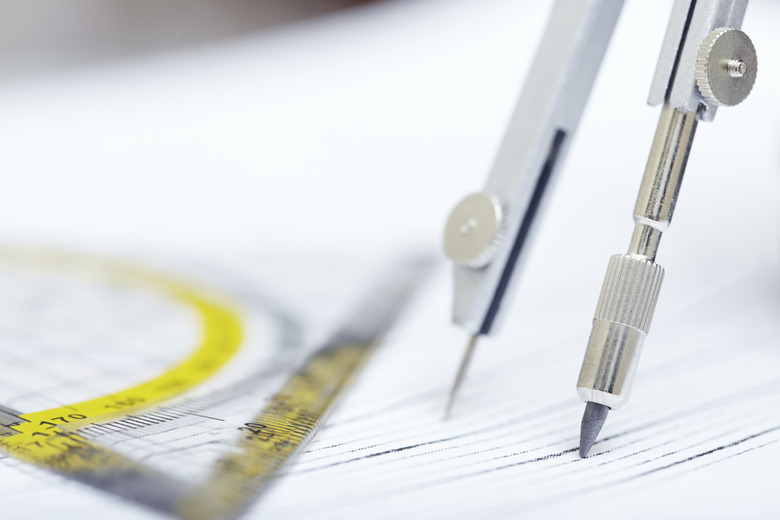Three Special Types Of Parallelograms
Parallelograms are a specific type of quadrilateral – which is a four-sided shape – but what distinguishes parallelograms from other quadrilaterals is that both pairs of opposite sides of a parallelogram are parallel. Additionally, some parallelograms are special — rhombuses, rectangles and squares — because these shapes have additional properties that distinguish them from other parallelograms.
Properties of a Parallelogram
Properties of a Parallelogram
Parallelograms are quadrilaterals that have two sets of parallel sides and two sets of congruent sides. A parallelogram's opposite angles are congruent; its consecutive angles are supplementary; its diagonals bisect each other and its diagonals form two congruent triangles. So, in a hypothetical parallelogram ABCD, moving clockwise, starting from point A at the top left of the parallelogram, you see that side AB is parallel to side DC and side BC is parallel to side AD. The parallelogram's opposite angles are congruent to each other and its consecutive angles are supplementary to each other. The parallelogram's diagonals AC and BD bisect each other and its diagonals form two congruent triangles.
Properties of a Rectangle
Properties of a Rectangle
A rectangle is a quadrilateral that has four right angles — but unlike a square — a rectangle's four sides are not all the same length. A rectangle has two sets of parallel sides, with two sides the same length and the other two sides equal to each other, but not to the first set of equal sides. A rectangle is also a parallelogram, so that it contains all the properties of a parallelogram and also includes additional properties. These additional properties are that its four angles are right angles and that its diagonals are congruent to each other. In a hypothetical rectangle ABCD, moving clockwise, starting from point A on the top left, you see that the rectangle's four angles are all right angles and that its two diagonals are congruent, with diagonal AC congruent to diagonal BD.
Properties of a Rhombus
Properties of a Rhombus
A rhombus is a quadrilateral that has four congruent sides and includes all the properties of a parallelogram. A rhombus has additional properties, which are that its consecutive sides are congruent; its diagonals bisect pairs of opposite angles; and its diagonals are perpendicular to each other. In a hypothetical rhombus ABCD, moving clockwise, starting from point A on the top left, you see that side AB is congruent to side BC and side CD is congruent to side DA. You can also see that the rhombus' diagonals bisect pairs of opposite angles and that diagonal AC is perpendicular to diagonal DB.
Properties of a Square
Properties of a Square
A square is a quadrilateral and a parallelogram that has four congruent sides and four congruent angles. The definition of a square also combines the definitions of both a rectangle and a rhombus, so that all the properties that apply to a rectangle and a rhombus also apply to a square. A square has four 90-degree angles, four equal sides, equal diagonal lengths, perpendicular diagonals and bisected opposite angles. In a hypothetical square, ABCD, moving clockwise, starting from point A at the top left, you see that side AB = side BC; side BC = side CD; side CD = side DA and therefore, side DA = side AB. Diagonal AC is congruent to BD.
Cite This Article
MLA
Walcott, Kat. "Three Special Types Of Parallelograms" sciencing.com, https://www.sciencing.com/three-special-types-parallelograms-8293631/. 24 April 2017.
APA
Walcott, Kat. (2017, April 24). Three Special Types Of Parallelograms. sciencing.com. Retrieved from https://www.sciencing.com/three-special-types-parallelograms-8293631/
Chicago
Walcott, Kat. Three Special Types Of Parallelograms last modified March 24, 2022. https://www.sciencing.com/three-special-types-parallelograms-8293631/
